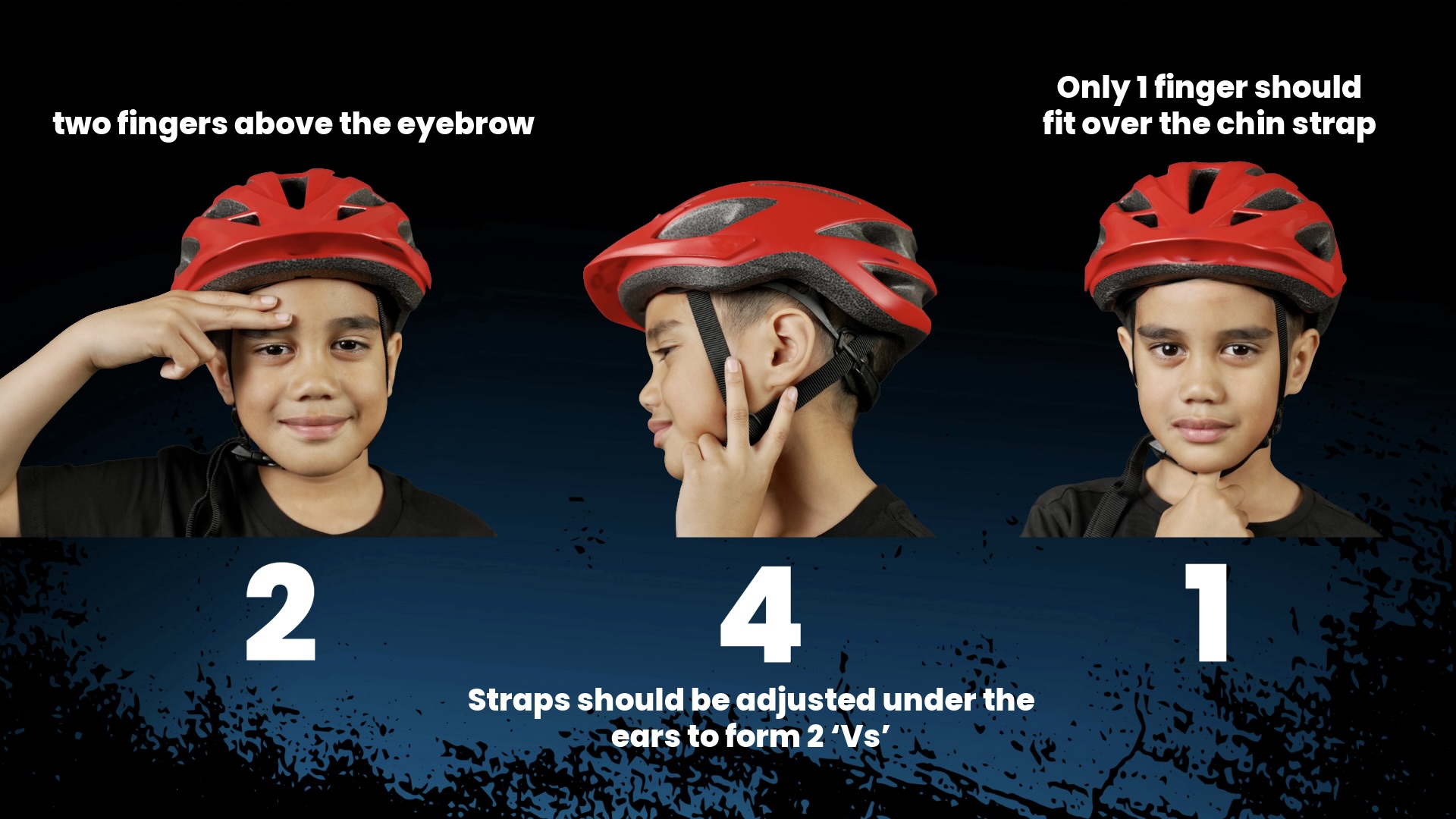Bike, Helmet and Wheels Safety
Watch: How to Keep Your Tamariki Safe on Wheels
Every year at least one tamaiti is killed and a further 330 tamariki are hospitalised with serious injuries while riding a bike. These injuries happen on the road, shared paths, bike tracks, and even at home.
Male tamariki 5-14 years old are most at risk of being injured while riding their bikes; and European children and tamariki Māori and overrepresented in these incidents.
Developmentally it is difficult for tamariki under 10 years to judge the speed and how far away vehicles and other riders. This increases their risk of being injured in collisions while riding their bikes.
Children’s brains are particularly vulnerable to injury, so it’s important that we keep our mokopuna safe while they are enjoying cycling.
Our tamariki look up to their parents and older family members. Setting a good example for how to ride bikes safely will best set them up to ride by themselves. It’s important to be seen, plan your route and wear a helmet and reflective gear when riding bikes.
Check out more of our helmet and bike safety tips below to keep your tamariki safe.
Helmet safety for tamariki
The upoko is precious and we want to do everything we can to protect it. So, teach tamariki to wear a properly fitted helmet when riding a bike. It reduces the risk of a serious head injury by around 60%1
Use the 2-4-1 check to make sure your tamaiti’s helmet is fitted properly.

2 fingers to fit between the helmet and eyebrows.
4 fingers to form V’s along the straps either side of the ears (2 each side).
1 finger to fit between the buckle and the chin.
Tighten the dial at the back before adjusting the straps – fit it to be snug but not tight or uncomfortable. Tamariki should be able to wiggle their heads gently without their helmet moving.
Remember a helmet only works if it’s on properly.
When do helmets need to be replaced?
Helmets last about 5 years, or one crash, before they need to be replaced.
Before putting a helmet on, teach tamariki how to check the helmet shell and polystyrene for any cracks or damage. The straps and buckle should be in good condition too, not frayed or broken.
If there is damage to the helmet, it’s important that it is replaced as it will not provide the proper protection for your tamaiti’s head.
Is there a specific helmet for tamariki?
Helmets need to be Standards-approved, and worn on every ride, even at home. You can find this sticker on the inside of the helmet.
This cycle helmet is effective when tamariki are riding their scooters, roller skating or in-line skaing too. There is a special type of helmet for skateboarding (or longboarding) though. It’s important they wear a helmet for all wheeled sports activities.
If possible, let tamariki pick their own new helmet – they may be more likely to wear it!

Bike safety tips for whānau
How to keep your bike in good working condition
Do the ABCD bike check regularly with tamariki to keep their bikes in good working condition:
A – Air: Check tyres are firm
B – Brakes: Check each brake is working while walking alongside the bike
C – Controls: Inspect the chain, pedals and handlebars
D – Drop: Lift the bike 10cm and drop it, listening for creaking sounds, which may indicate damage.
Check the quick-release levers on each wheel are secure.
Check that the seat is around hip height and that tamariki can place their feet on the ground when sitting on the seat.
Safe Riding Tips
It’s safer to wait until tamariki are at least 10 years old and confident riding their bikes alongside traffic before heading out on the road on their own. If they’re going to ride to school, do the route with the a few times first so they’re familiar with it.
Safe places like parks, shared paths and quiet streets are great places for tamariki to practice riding their bike and sharing the pathways with others.
Help tamariki learn how to do these important steps when biking:
Keep left
Look over the shoulder for traffic
Pass others safely
Use hand signals to show where they’re going
Watch out for hazards and ride in a way that avoids them
Use bike lights if riding a bike in low light or dark conditions
Does my tamaiti's bike need specific equipment?
Brakes: Your tamaiti's bike must have good brakes on the front and back of the wheels. This is a legal requirement.
Reflectors: Bikes must have a rear reflector that can be seen from 200 metres away when light shines on it (e.g. headlights of a car).
FAQs
What other gear do tamariki need to be wearing when cycling?
While there is no required type of clothing tamariki need to wear, it is advised that they are wearing no loose clothing or shoelaces, and no open toed shoes. This is because loose and long clothing can get caught in the gears of the bike
Bright colours will make tamariki more visible in the day and lights, reflective gear, and high vis for low-light conditions.
How do I make sure a bike is safe for my tamariki when purchasing?
Bring you tamariki along to try out the fit when purchasing a bike for them. Ask for help if needed to get the right size for their height. And remember that their feet should be able to touch the ground comfortably when sitting on the bike seat.
It’s important to get the correct size helmet and bike for tamariki - the size that is right for them now, not something they will ‘grow into’.
Download our Whānau Bike and Helmet Safety Resource
Click here to download the safety resource or click the image below.

Resources and more info
https://www.nzta.govt.nz/safety/keeping-children-safe/bike-safety-tips/
https://www.nzta.govt.nz/assets/resources/factsheets/01/docs/01-cycles.pdf
https://bikeready.govt.nz/parents/teach-your-kids-to-ride-a-bike/
https://bikenz.org.nz/essential-safety-gear-for-kids-biking-in-new-zealand/
